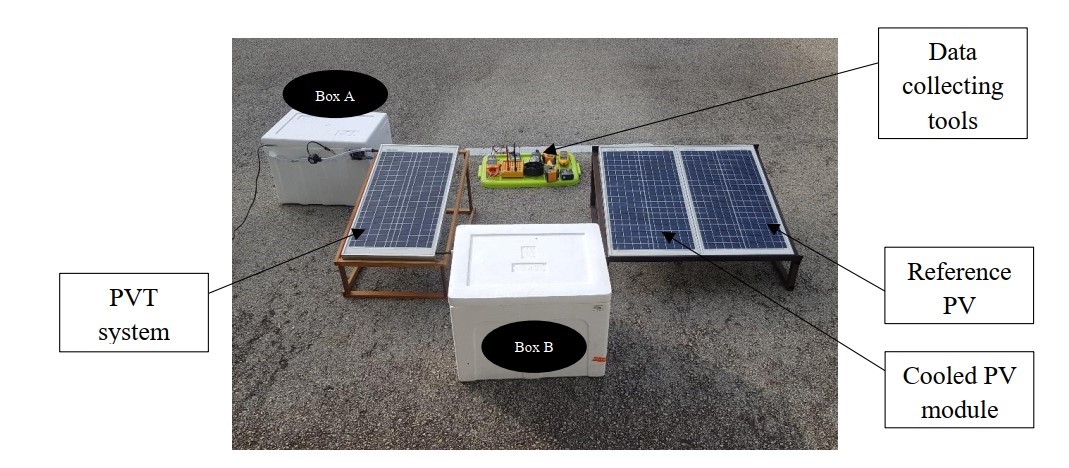Researchers at Universiti Malaysia Pahang have developed a novel passive cooling technique for solar modules that uses moist coconut fiber as the cooling agent.
“Our solution uses a bio-inspired coconut fiber for thermal regulation,” researcher Sudhakar Kumarasamy told pv magazine. “It can be used for building-integrated photovoltaic (BIPV) rooftop systems, ground-mounted plants and agrivoltaics.”
The researchers described their findings in “Thermal and Electrical Performance of Uncooled, Nature-Cooled, and Photovoltaic Thermal Module,” which was recently published in the International Journal of Photoenergy. They said that the cooling system features a moist coconut pith encapsulated with a polyurethane sheet. It is placed on the back of surface of a PV module to act as a heat sink.
“Water molecules are directly in contact with the PV modules’ back surface with the coconut fiber’s help due to the coconut fiber’s high water-holding capacity, lowering the back surface temperature of the module,” the scientists said, noting that this helps to transfer heat from the front to the back surface via conduction. “Following this, the sensible heat will be absorbed by the water molecules present in the coconut fiber. Finally, when the water molecules have absorbed sufficient heat energy, they will act as a heat removal agent by evaporating through the perforations present on the polyethylene sheet encapsulation.”
The researchers compared the temperature behavior and performance of a PV module equipped with the system to that of a photovoltaic-thermal module (PVT) with water-based cooling. They found that the passively cooled PV module had a maximum operational temperature of 44.6 C, while the PVT panel and a reference PV panel without cooling registered higher temperatures of 47.8 C, and 57.2 C, respectively.
“By integrating damp coconut, the temperature of the PV module surface was decreased by 22.03% and 23.46%, whereas the PVT system reduced the PV module surface temperature by 16.43%,” the scientists explained. “The maximum power point (MPP) for the passively cooled PV module with coconut fiber, PVT system, and reference module is 24.21 W, 20.21 W, and 14.65 W, respectively.”
They said that the passively cooled PV module's power output increased by 65.26%.
“The PVT system, however, only managed to increase the power output by 37.95%,” the said. “The convection that carries water molecules away from the back of the PV module increases heat loss from the back surface and, as a result, from the front cover of the passively cooled PV module compared to the PVT system.”
The same research group also published an extensive review of all passive and cooling techniques applied to photovoltaics in October 2021. The study looked at active techniques such as air-based cooling, liquid-based cooling, forced water circulation, liquid immersion cooling, water spraying. The also considered passive methods like PCM cooling, heat pipes, heat sink or fins and heat exchangers, microchannel heat exchangers, radiative sky cooling, nano-fluid based cooling, thermoelectric cooling, evaporative cooling, and spectrum filter cooling.
This content is protected by copyright and may not be reused. If you want to cooperate with us and would like to reuse some of our content, please contact: editors@pv-magazine.com.




By submitting this form you agree to pv magazine using your data for the purposes of publishing your comment.
Your personal data will only be disclosed or otherwise transmitted to third parties for the purposes of spam filtering or if this is necessary for technical maintenance of the website. Any other transfer to third parties will not take place unless this is justified on the basis of applicable data protection regulations or if pv magazine is legally obliged to do so.
You may revoke this consent at any time with effect for the future, in which case your personal data will be deleted immediately. Otherwise, your data will be deleted if pv magazine has processed your request or the purpose of data storage is fulfilled.
Further information on data privacy can be found in our Data Protection Policy.